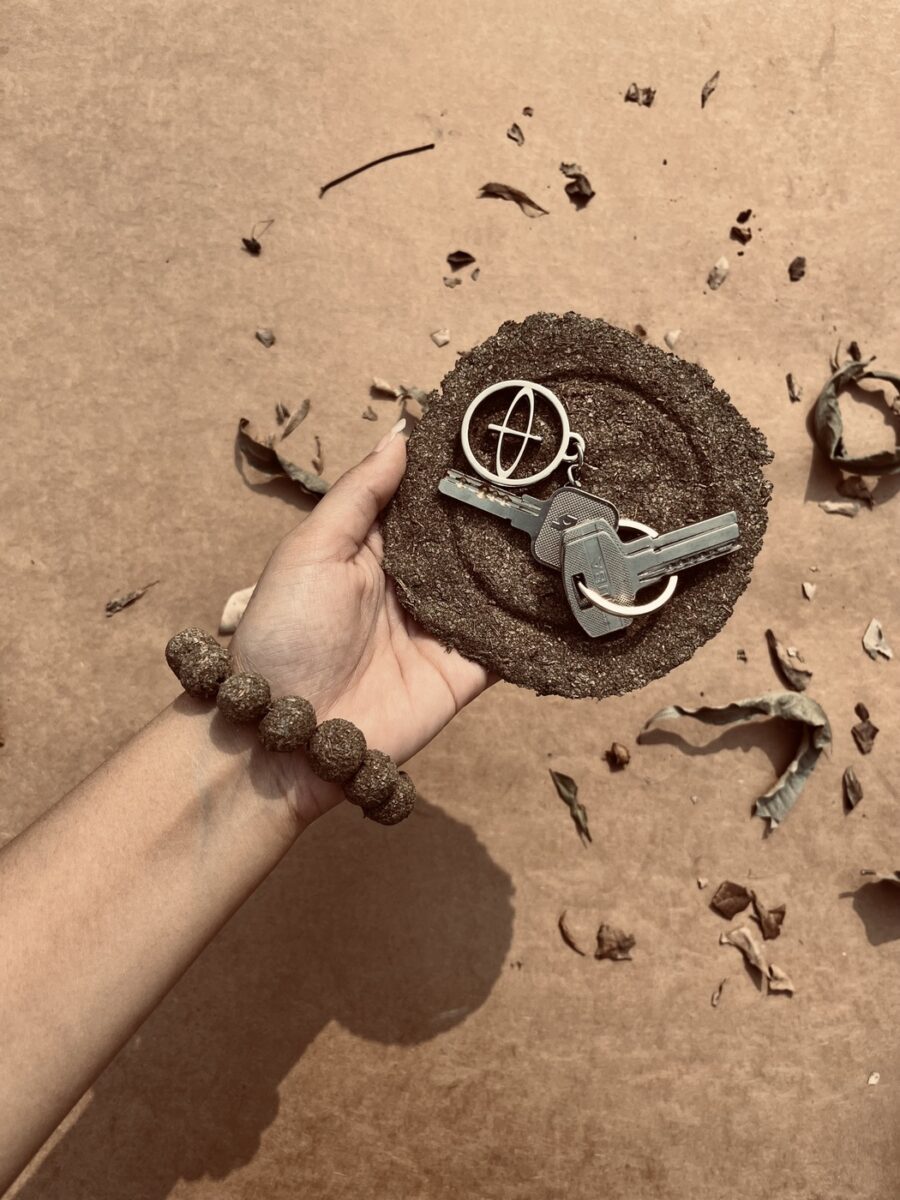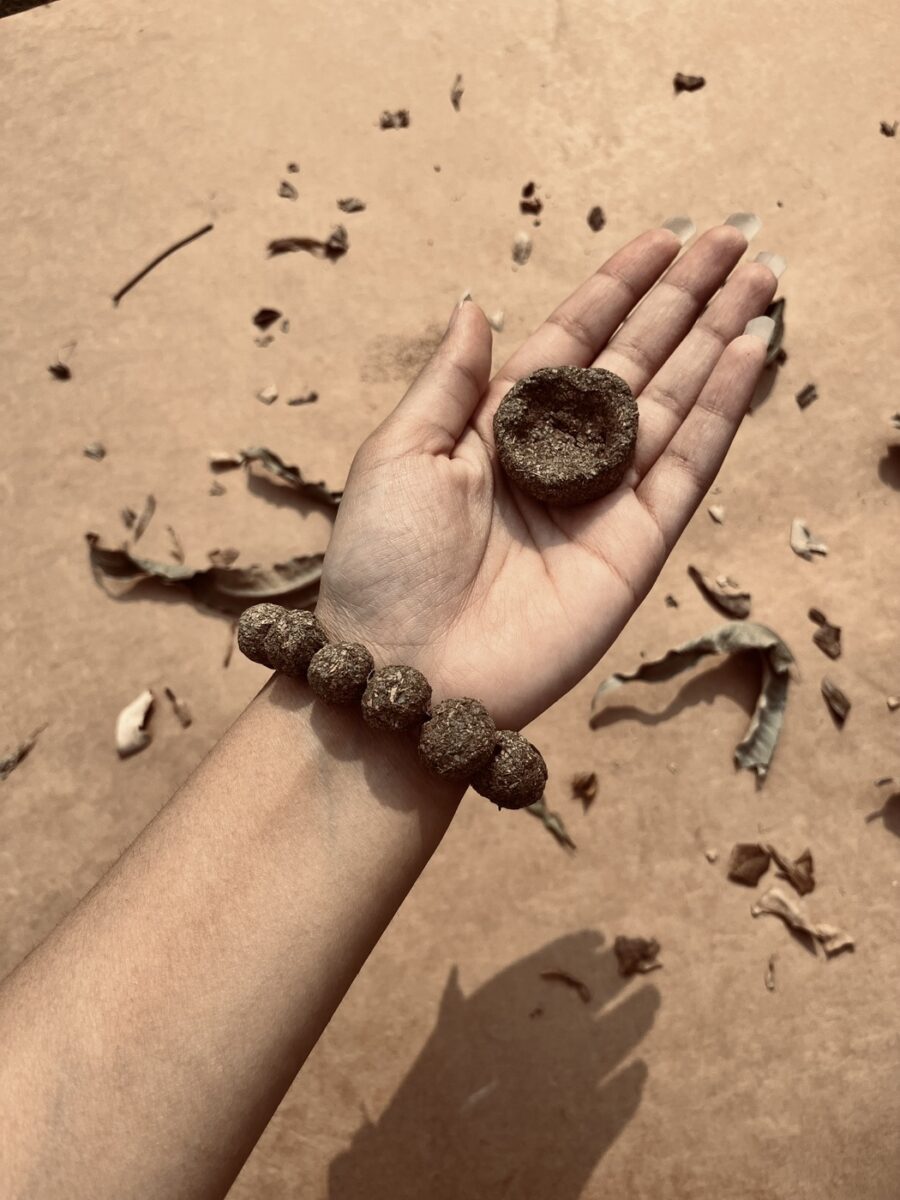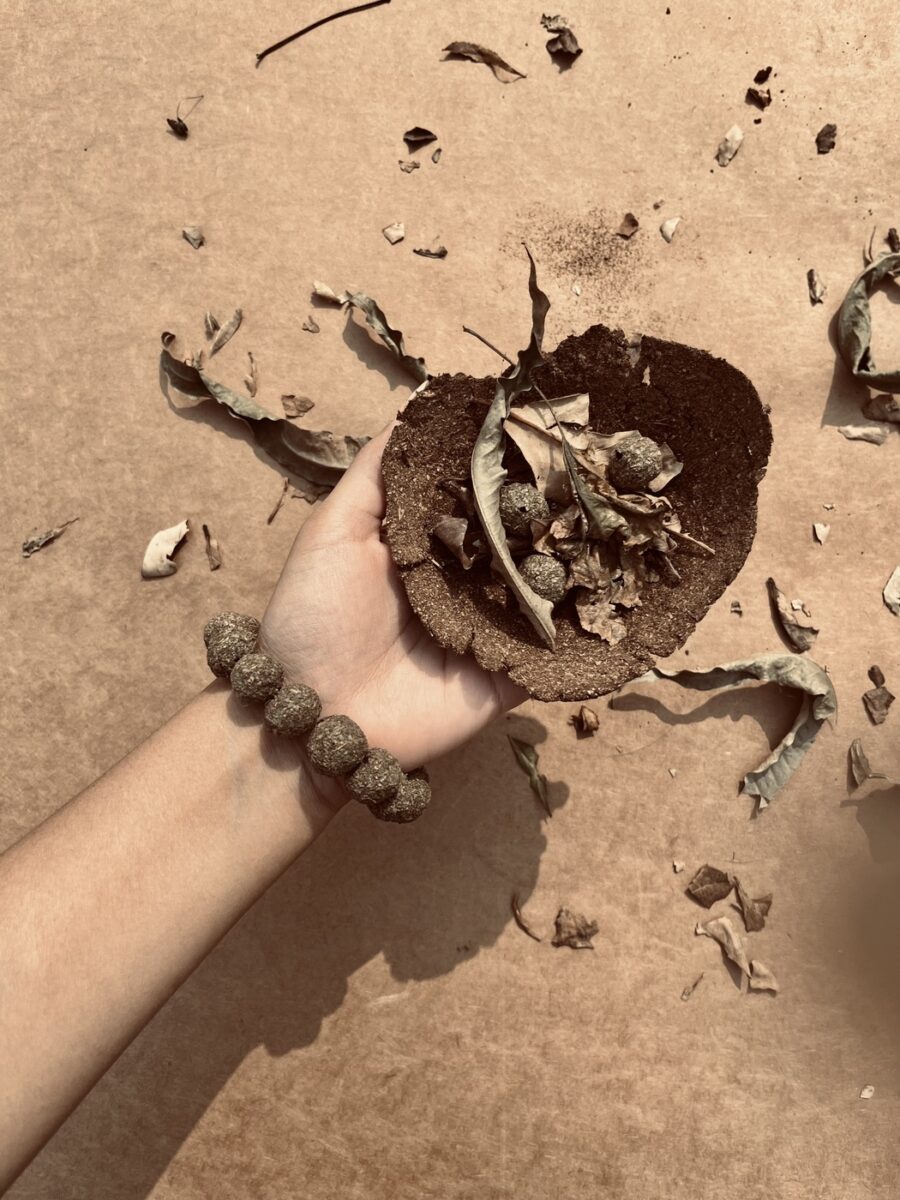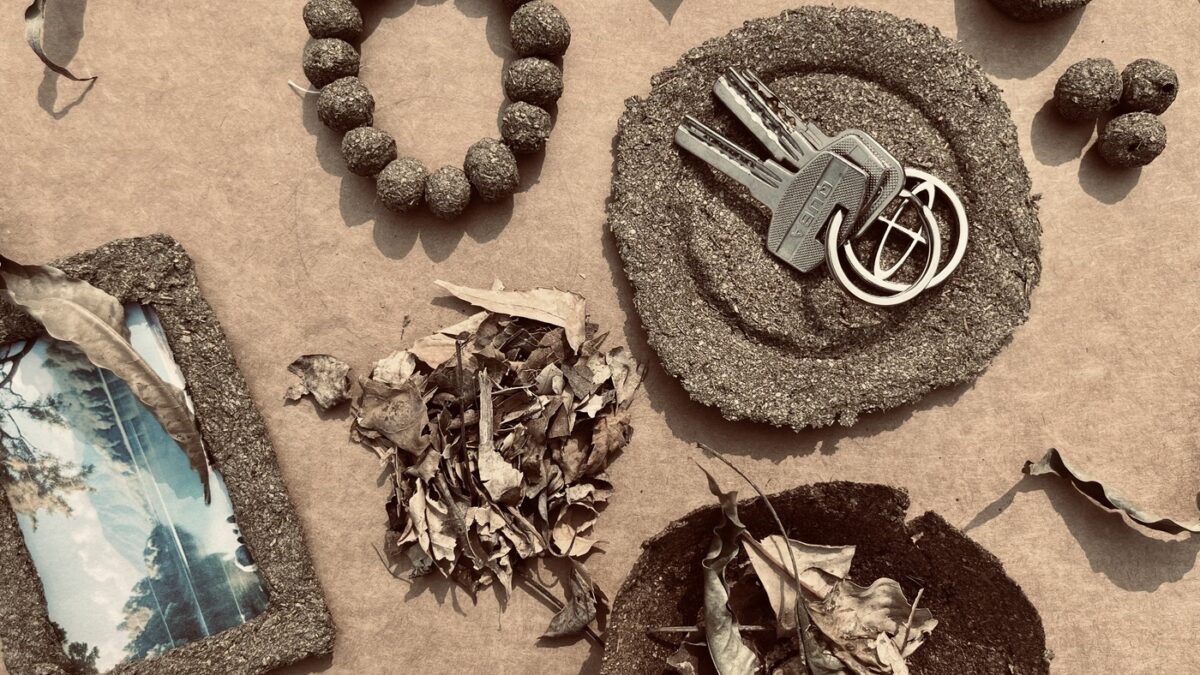
LEAFY BIOMAT, a new life for dried leaves
Fallen leaves are often a resource that we do not exploit, but what happens in the city if the amount of waste generated is so great that it cannot be managed? This is what happens every day in the areas of the Municipal Corporation of Delhi (MCD) – one of the largest municipal bodies in the world providing civic services to a population of about 20 million citizens – where 45 tonnes of dry leaf waste is generated (Sharma V, 12 March 2023, TOI). The production is so large that MCD trucks have to make several trips per day for collection throughout the city.
Although attempts are made to convert the leaves into compost, due to their huge quantity, they are often collected and burnt by residents, an activity that leads to another problem: in a study conducted by the ‘Real Time Source Apportionment Study’, the combustion of leaf and twig biomass is one of the largest sources of PM 2.5 pollutant release into the air. The gases released by combustion cause long-term health problems in Delhi’s urban neighborhood (Vats S., 9 January 2023, ThePrint). The situation worsens in the colder months, from November to February when biomass waste is readily available to provide combustion heat to millions of people.
Architect Muskan Jain has tried to find a solution to these two problems, waste management and air pollution: collecting and converting dry leaves into a new bio-based material that needs no treatment. A new resource with zero cost that goes by the name of Leafy BioMat.
c
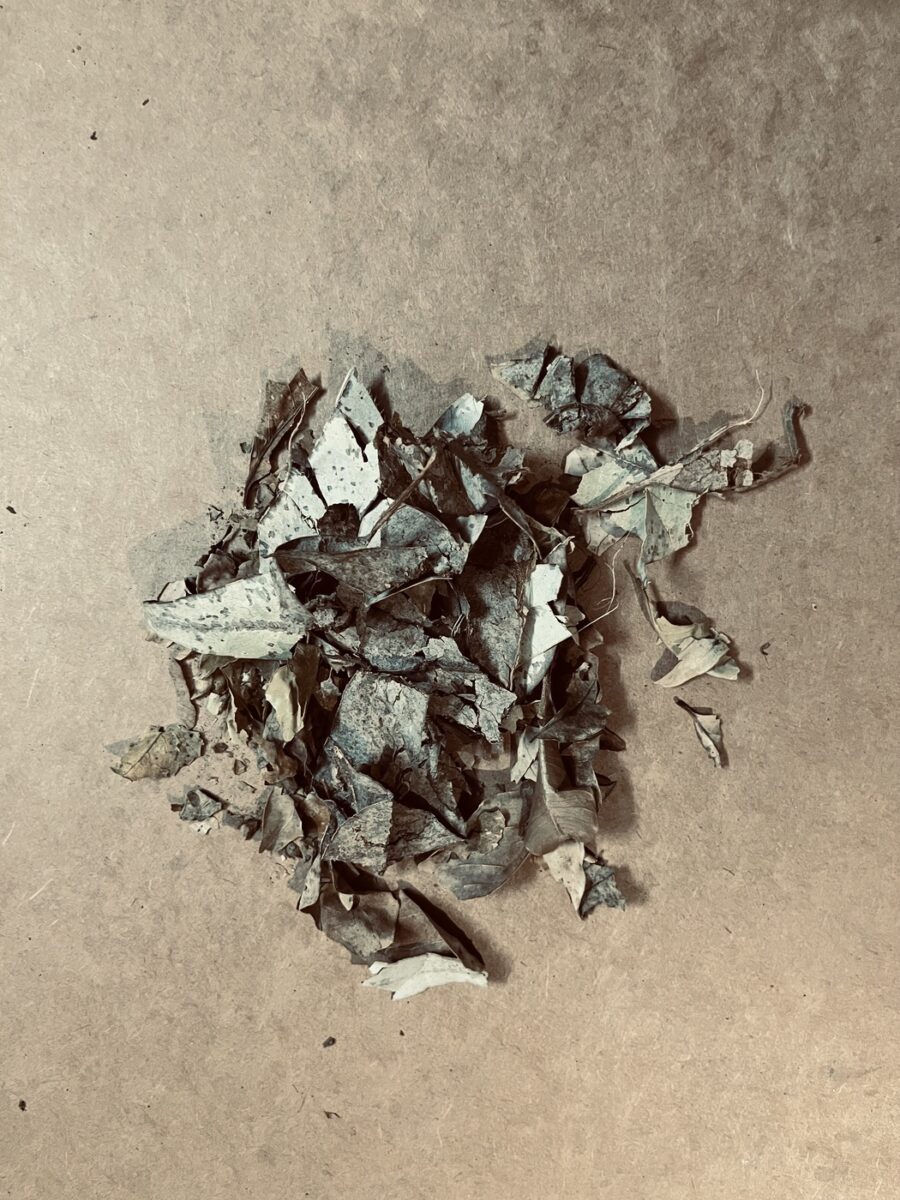
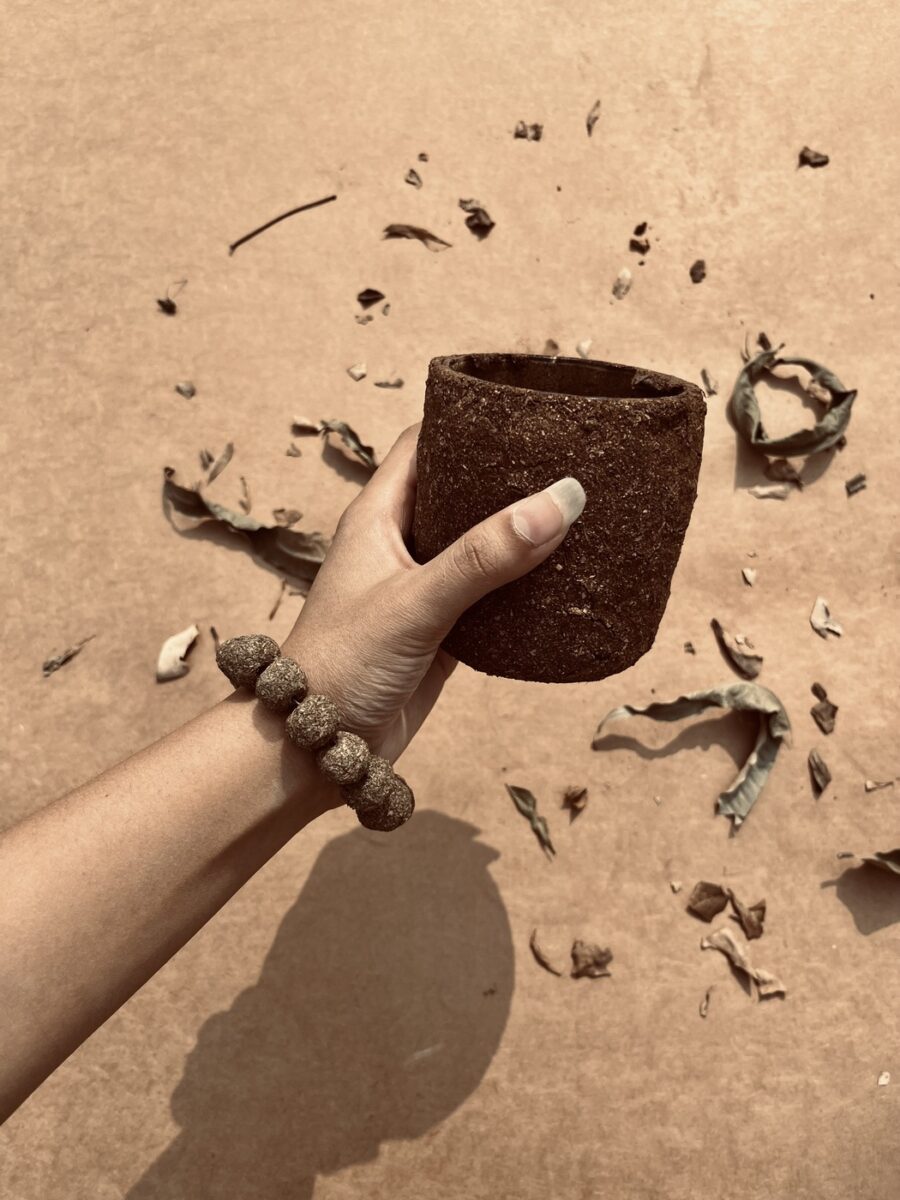
c
The new Leafy BioMat material
The project presents an innovative and sustainable alternative to products developed using plastic. Leafy BioMat helps reduce costs and environmental risks and is fully compostable. The production process is simple and can also be done at home, while the versatility of this new material allows the product to be molded into many desired shapes and sizes. Modifying the biological components allows the designer to control the strength and durability of the final product.
Harvested dry leaves have different colors depending on the type of tree they fell from; three types of colors were sampled for this study. The natural tone of the different leaves lends a unique, organic aesthetic to the result.
The leaves are ground down to fine, homogenous particles and mixed with a starch-based biopolymer that acts as a natural binder. Different ratios of the components provide a different consistency to the final material. This flexible mixture can be molded into different shapes to produce a wide range of products.
c
Characteristics and applications
In addition to the obvious savings in pollution and waste management, Leafy BioMat is a flexible material that can create different shapes. The organic finish, given by the mix of harvested leaves, gives the products a unique color and character. Thanks to a natural binder, the product is fully compostable. The objects created with Leafy BioMat are small-scale accessories and complements: a key plate, a bracelet, a pen holder, a photo frame, and a container.
Leafy BioMat is still in the testing phase and looking for funding. It is featured on WeVux’s new and free Materials Design Map. To learn more about the material, visit the reference page or follow Leafy BioMat on LinkedIn!
Photo Muskan Jain
c
